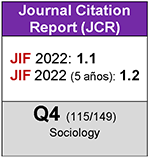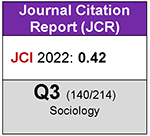Lipsky Revisited: the Case of the Structural Programme for Risk Areas (Programa Estrutural em Áreas de Risco - PEAR) of the Municipality of Belo Horizonte (Brazil)
DOI:
https://doi.org/10.5477/cis/reis.154.119Keywords:
Bureaucracy • Latin America • Urban Environment • Public Politics • Housing, Bureaucracy, Latin America, Urban Environment, Public Politics, HousingAbstract
The practices of street-level bureaucracy (SLB) constitute a central issue to efforts made to understand the implementation of public policies. Lipsky?s seminal work established the theoretical bases for a methodical analysis of this type of practice. Nevertheless, the appropriation of Lipsky, at least in the Latin American context, is limited to partial references and lacks a rigorous empirical examination of the theory. Our analysis of the Structural Programme for Risk Areas, based on both primary data (ethnographic participation, interviews, focus groups) and secondary data (offi cial texts), identifi ed practices and contexts not foreseen by the theory. Contrary to the theoretical postulates, it was found that the behavioural hypotheses of rationalisation of service and cognitive simplification are not good predictors of the relationships of street-level bureaucrats (SLBs) with their clients.
Downloads
Downloads
Published
How to Cite
Issue
Section
License
Copyright (c) 2024 Revista Española de Investigaciones Sociológicas

This work is licensed under a Creative Commons Attribution-ShareAlike 4.0 International License.
Permite Compartir — copiar y redistribuir el material en cualquier medio o formato, Adaptar — remezclar, transformar y construir a partir del material para cualquier propósito, incluso comercialmente.








